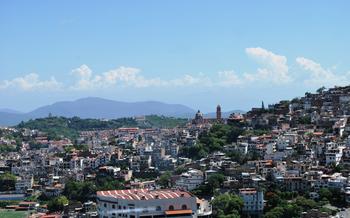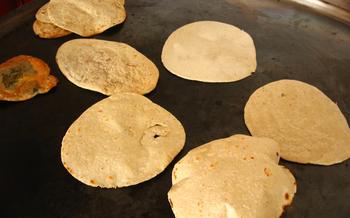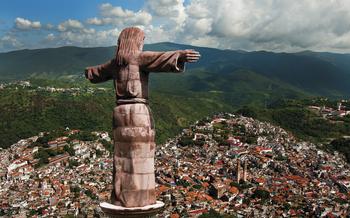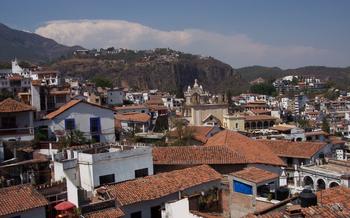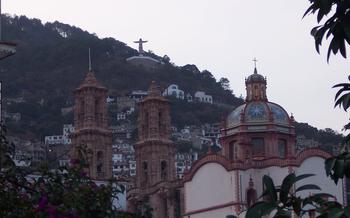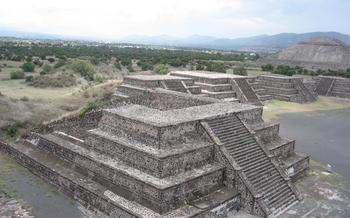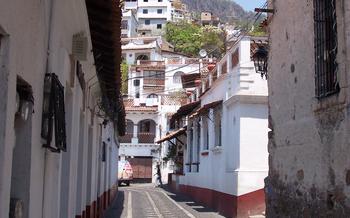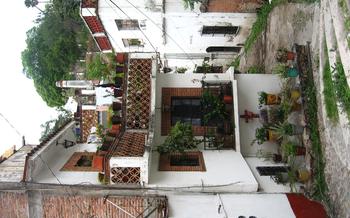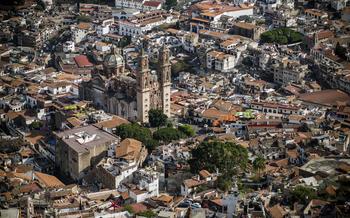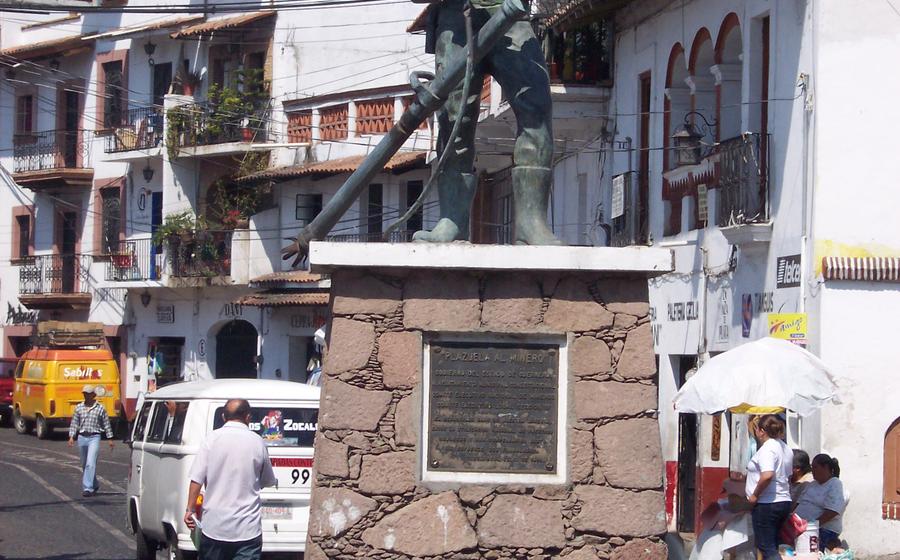
Monumento al Minero
- Historical Significance
- Location and Accessibility
- Architectural Design and Symbolism
- Historical Context of Mining in Taxco
- Mining Techniques and Equipment
- Safety and Working Conditions
- Miners' Lives and Culture
- Impact on the Environment
- Economic and Social Legacy
- Legends and Folklore
- Museums and Exhibitions
- Guided Tours
- Events and Festivals
- Insider Tip:
Historical Significance
Taxco, a city nestled in the mountains of southern Mexico, has a rich history intertwined with mining. The Monumento al Minero, a poignant tribute to the miners who dedicated their lives to extracting the earth's treasures, stands as a testament to the city's mining heritage. Erected in 1950, the monument commemorates the countless miners who lost their lives in the treacherous mining operations that shaped Taxco's destiny. Recognized as a cultural heritage site, the Monumento al Minero serves as a reminder of the sacrifices made by these unsung heroes, whose labor fueled the city's prosperity and left an indelible mark on its identity.
The mining industry in Taxco dates back to the pre-Columbian era, when indigenous peoples extracted silver and other precious metals from the region's rich mineral deposits. During the colonial period, Spanish conquistadors intensified mining activities, exploiting the abundant silver reserves and transforming Taxco into a major mining center. The city's silver production played a crucial role in the development of the Spanish Empire, contributing to its economic strength and global influence.
Location and Accessibility
The Monumento al Minero stands proudly in the heart of Taxco, a city steeped in mining history. Situated on the Plaza Borda, a vibrant square adorned with colonial architecture, the monument is a short walk from the city's main attractions, including the Santa Prisca Church and the William Spratling Museum. Reaching the monument is a breeze, whether you choose to explore Taxco's charming streets on foot or hop on a local bus that conveniently stops nearby. For those arriving by car, ample parking is available in the vicinity, ensuring a hassle-free visit to this iconic landmark.
Architectural Design and Symbolism
The Monumento al Minero stands as a testament to the skill and artistry of its creators. Its unique architectural design is a blend of colonial and pre-Hispanic influences, reflecting Taxco's rich cultural heritage. The monument features a central column topped by a bronze statue of a miner holding a pickaxe and a lantern. The column is surrounded by four smaller columns, each adorned with a different symbol representing the four elements: earth, air, fire, and water.
The symbolism embedded in the monument's design is profound. The central column represents the strength and resilience of the miners, who worked tirelessly in the face of danger and adversity. The bronze statue symbolizes their dedication and sacrifice, as they risked their lives to extract the precious silver from the earth. The four smaller columns and their associated elements represent the natural forces that the miners had to contend with during their work.
The monument's construction materials also hold symbolic significance. The central column is made of cantera stone, a type of volcanic rock commonly found in Mexico. This material represents the solidity and permanence of the mining industry in Taxco. The bronze statue, on the other hand, is a symbol of the miners' strength and determination, as bronze is a durable and long-lasting metal.
Overall, the architectural design and symbolism of the Monumento al Minero create a powerful and evocative tribute to the miners of Taxco. The monument serves as a reminder of their hard work, sacrifice, and contribution to the city's rich history and culture.
Historical Context of Mining in Taxco
Taxco's mining history dates back to the pre-Columbian era, when indigenous peoples extracted silver and other minerals from the surrounding mountains. However, it was during the colonial period that mining truly flourished in the city. In the 16th century, Spanish conquistadors discovered rich silver deposits in the area and established several mines. Taxco quickly became one of the most important silver-producing centers in the New World.
The mining industry played a crucial role in the development of Taxco. The influx of Spanish miners and laborers led to a rapid growth in the city's population. The wealth generated by mining fueled the construction of impressive churches, mansions, and public buildings, transforming Taxco into a prosperous and cosmopolitan city.
Mining in Taxco was a challenging and dangerous endeavor. Miners worked long hours in cramped and poorly ventilated tunnels, using primitive tools and techniques. Cave-ins, explosions, and other accidents were common, and many miners lost their lives in the pursuit of silver.
Despite the risks, mining brought significant economic benefits to Taxco and the surrounding region. The city became a major trading center, and its wealth attracted merchants and artisans from all over the world. The mining industry also contributed to the development of infrastructure and services, such as roads, bridges, and hospitals.
Mining Techniques and Equipment
The miners of Taxco employed traditional mining techniques that had been passed down through generations. One of the most significant methods was the "tajo abierto" or open-pit mining. This involved digging large, open pits in the ground to extract the ore-bearing rock. The miners used picks, shovels, and carts to manually extract the ore and transport it to the surface.
Water management was crucial in mining operations. The miners had to contend with groundwater seeping into the pits, which could cause cave-ins and flooding. To prevent this, they built drainage systems and tunnels to divert the water away from the mining areas.
The miners also used a variety of tools and equipment to aid in their work. These included picks, shovels, hammers, chisels, and carts. They also used candles and oil lamps to illuminate the dark underground tunnels. As mining operations became more sophisticated, the miners began to use more advanced equipment, such as pumps, drills, and explosives.
Safety and Working Conditions
Mining in Taxco was fraught with danger, and accidents were common. Cave-ins, explosions, and rock falls were frequent occurrences, and miners worked in constant fear of injury or death. The lack of safety regulations and protective equipment further exacerbated the risks. Miners often worked long hours in cramped and poorly ventilated tunnels, exposed to toxic fumes and dust. They used rudimentary tools and techniques, and many suffered from respiratory problems, silicosis, and other health issues. The harsh working conditions and constant exposure to danger took a heavy toll on the miners' physical and mental health. Despite the risks, miners continued to work in the mines, driven by the need to support their families and the allure of the potential rewards.
Miners' Lives and Culture
The miners of Taxco lived a harsh and unforgiving life. They worked long hours in dangerous conditions, with little regard for their safety. Despite the risks, they formed a strong sense of community and camaraderie, relying on each other for support and survival.
Miners' days typically began before sunrise when they would gather at the mine entrance to receive their assignments for the day. They would then descend into the dark, cramped tunnels, armed with only their picks, shovels, and carts. The work was physically demanding, and the air was often thick with dust and fumes.
Despite the hardships, the miners found solace and companionship in each other. They shared stories, jokes, and songs to lighten the mood and boost morale. They also developed a deep respect for nature and the mountains they worked in.
The miners' beliefs, traditions, and superstitions played an important role in their lives. They believed in the power of amulets and talismans to protect them from danger. They also had a deep reverence for the patron saint of miners, Santa Barbara, to whom they prayed for protection and guidance.
Women and children also played a vital role in mining communities. Women often worked as ore sorters or carried supplies to the miners. Children helped with tasks such as cleaning and maintaining the mines.
Impact on the Environment
Mining operations in Taxco have had a significant impact on the environment. The extraction and processing of silver and other metals have resulted in the pollution of water and air. Chemicals used in the mining process, such as cyanide and mercury, have contaminated water sources, harming aquatic life and posing health risks to local communities. The release of toxic gases and dust particles into the air has led to air pollution, affecting the health of residents and contributing to climate change.
Mining activities have also caused deforestation and soil erosion. Forests have been cleared to make way for mining operations, resulting in the loss of biodiversity and habitat fragmentation. Mining activities have also led to soil erosion, as the removal of vegetation and the disturbance of soil during mining operations have made the land more susceptible to erosion by wind and water.
In recent years, there have been efforts to mitigate the environmental impact of mining in Taxco. Mining companies are now required to implement environmental protection measures, such as water treatment and reforestation programs. The government has also established regulations to limit the environmental impact of mining operations. However, there is still much work to be done to fully address the environmental challenges posed by mining in Taxco and to ensure the long-term sustainability of the city's mining industry.
Economic and Social Legacy
Mining had a profound impact on the economy and society of Taxco. The silver produced in the city's mines fueled the development of the region, contributing to the growth of infrastructure, services, and trade. Taxco became a wealthy and prosperous city, attracting people from all over the country. The mining industry also had a significant social impact, leading to the growth of the city's population and the emergence of a diverse and vibrant community.
However, the decline of the mining industry in the late 19th century left Taxco facing significant challenges. The city's economy suffered, and many people lost their jobs. The population declined, and the city fell into disrepair. It was only in the mid-20th century that Taxco began to recover, thanks in part to the development of tourism. Today, Taxco is a popular tourist destination, and its mining heritage is one of its main attractions.
Despite the challenges it faced, Taxco's mining legacy continues to shape the city's identity. The city is home to numerous museums and exhibitions that showcase its mining history, and there are many events and festivals that celebrate the city's mining heritage. Visitors to Taxco can learn about the city's mining past by visiting these museums and exhibitions, taking guided tours, and attending events and festivals.
Legends and Folklore
Mining has always been a dangerous occupation, and this is reflected in the many legends and stories that have sprung up around it. In Taxco, one of the most popular tales is about a miner named Juan who was trapped in a cave-in. As he lay dying, he promised to return to the surface as a ghost and protect his fellow miners. To this day, some people claim to have seen Juan's ghost wandering the mines, keeping watch over the living.
Another popular legend tells the story of a young woman named Maria who was engaged to a miner. One day, her fiancé was killed in a mining accident. Maria was so distraught that she threw herself into the mine shaft and died. It is said that on the anniversary of her death, Maria's ghost can be seen wandering the streets of Taxco, searching for her lost love.
These legends and stories are a reminder of the dangers that miners faced, and the sacrifices that they made. They also serve to keep the memory of the mining era alive, and to remind us of the importance of safety in the workplace.
Museums and Exhibitions
Taxco is home to several museums and exhibitions that delve into the city's rich mining history, offering visitors a chance to explore the legacy of this industry. The Museo de la Minería (Mining Museum), located in the heart of the city, is a must-visit for anyone interested in learning more about Taxco's mining heritage. This museum showcases a collection of mining equipment, tools, and artifacts, providing insights into the techniques and processes used by miners throughout history.
Another notable museum is the Museo de la Platería (Silver Museum), which focuses on the city's renowned silver craftsmanship. Visitors can admire exquisite silver jewelry, tableware, and decorative items, showcasing the skills and artistry of Taxco's silversmiths.
For those seeking a more interactive experience, the Parque Temático Minero (Mining Theme Park) offers a unique opportunity to learn about mining in a fun and engaging way. This park features interactive exhibits, hands-on activities, and guided tours, allowing visitors to experience the life of a miner firsthand.
These museums and exhibitions play a crucial role in preserving and showcasing Taxco's mining heritage, ensuring that the stories and traditions of this industry continue to be passed down to future generations.
Guided Tours
Venturing into the captivating world of mining history in Taxco is made even more enriching with the availability of guided tours. These tours, led by knowledgeable local experts, offer a unique perspective and insights into the city's mining heritage. Whether you opt for a group tour, a private tour, or the flexibility of a self-guided tour, there's an option to suit every traveler's preference.
Professional tour guides bring history to life as they narrate the tales of Taxco's mining past, pointing out significant landmarks and sharing anecdotes that would otherwise go unnoticed. They provide valuable context to the Monumento al Minero, explaining its symbolism and significance within the community. Guided tours often include visits to other mining-related sites, such as the Museo de la Minería, offering a comprehensive exploration of Taxco's mining legacy.
To make the most of your guided tour experience, consider booking in advance, especially during peak tourist seasons. Tour operators typically offer a range of options, catering to different interests and budgets. Be sure to inquire about group discounts and any special arrangements for families or students. Whether you prefer the camaraderie of a group tour or the personalized attention of a private guide, embarking on a guided tour of Taxco's mining heritage is an unforgettable experience that will leave you with a deeper appreciation for the city's rich past.
Events and Festivals
Taxco's mining heritage is not only preserved in museums and monuments but also celebrated through vibrant events and festivals. One of the most notable is the Feria Nacional de la Plata, held annually in November. This week-long festival showcases the city's rich silver-mining history and features a variety of events, including traditional music and dance performances, art exhibitions, and a lively parade. Visitors can also witness demonstrations of traditional mining techniques and learn about the importance of silver mining to the region.
Another significant event is the Festival de Santa Prisca, held on February 3rd to honor the city's patron saint. During this festival, the streets of Taxco come alive with processions, fireworks, and music. The highlight of the festival is the Danza de los Mineros, a traditional dance performed by miners wearing colorful costumes and elaborate headdresses. This dance pays homage to the miners who risked their lives to extract silver from the mines and is a powerful reminder of the city's mining heritage.
Insider Tip:
For a truly immersive experience, visit the Monumento al Minero during the annual "Fiesta del Minero" (Miners' Festival) held in Taxco. This vibrant festival celebrates the rich mining heritage of the city with parades, traditional dances, live music, and exhibitions showcasing the history and culture of mining. It's a fantastic opportunity to witness the deep connection between Taxco and its mining past and to engage with the local community. Remember to respect the cultural significance of the mining heritage and minimize your environmental impact by using eco-friendly transportation options and supporting local businesses that promote sustainable practices.
